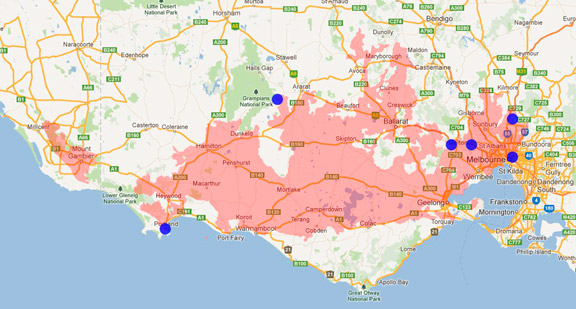A range of teacher professional learning programs will be developed to accompany the Biodiversity of the Western Volcanic Plains online outreach...

Christmas Beetle
Anoplognathus sp.
Adults are most abundant during midsummer, although adults can be seen from November to February. They feed on the leaves of eucalypts and can defoliate trees. They are attracted to lights. The larvae are white grubs which live in soil and feed on plant roots. Their large, moveable tarsal (foot) claws most likely help them to hang onto the thin leaves of eucalypt trees. Large numbers may emerge at the same time after spring thunderstorms have softened the soil.
| Details | Description |
| Type | Invertebrate |
| Group | Insect - Beetle |
| Identifying Characteristics | |
| Distinctive Markings | Shiny oval body, small clubbed antennae and spiky legs. |
| Diet | Herbivore. The adults eat eucalypt leaves. The larvae feed underground on organic matter such as roots of native grasses and lawns, but also eat roots of crop species in agricultural areas. |
| Habitat | Lives in dry schlerophyll (eucalypt) forests, agricultural areas and urban gardens. Larvae live in soil. |
| Native Status | Native to Australia |
| Taxonomy | |
| Phylum | Arthropoda |
| Class | Insecta |
| Order | Coleoptera |
| Family | Scarabaeidae |
| Genus | Anoplognathus |
| Species | sp. |

Distribution maps indicate current and historic locations where species have been sighted.
Source: Atlas of Living Australia
| Conservation Status | |
| DEPI Advisory List | Not listed |
| FFG Act | Not listed |
| EPBC Act | Not listed |
The conservation status of species is listed within Victoria and Australia.
The Department of Environment and Primary Industry (DEPI) Advisory List consists of non-statutory advisory lists of rare or threatened flora and fauna within Victoria.
The Flora and Fauna Guarantee Act 1988 (FFG Act) lists threatened species in Victoria. Under the Act, an Action Statement is produced for each listed species.
The Environment Protection and Biodiversity Conservation Act 1999 (EPBC Act) is the Australian Government’s key piece of environmental legislation, listing nationally threatened native species and ecological communities.



